#Nancy Grace Roman Space Telescope
Text
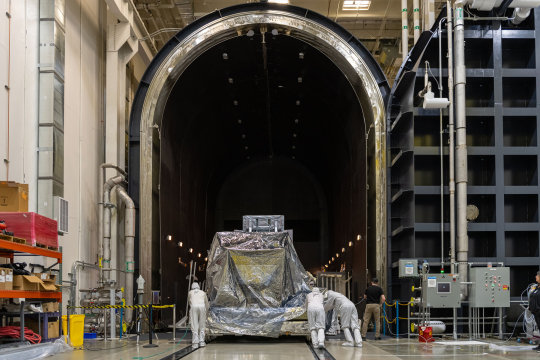
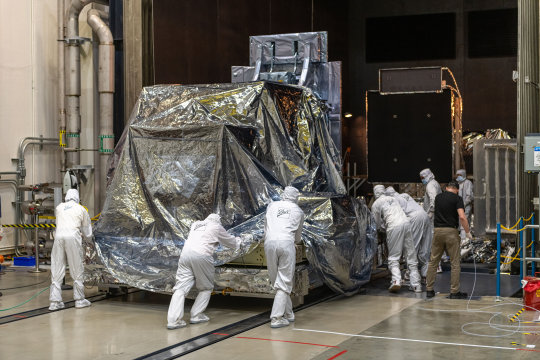
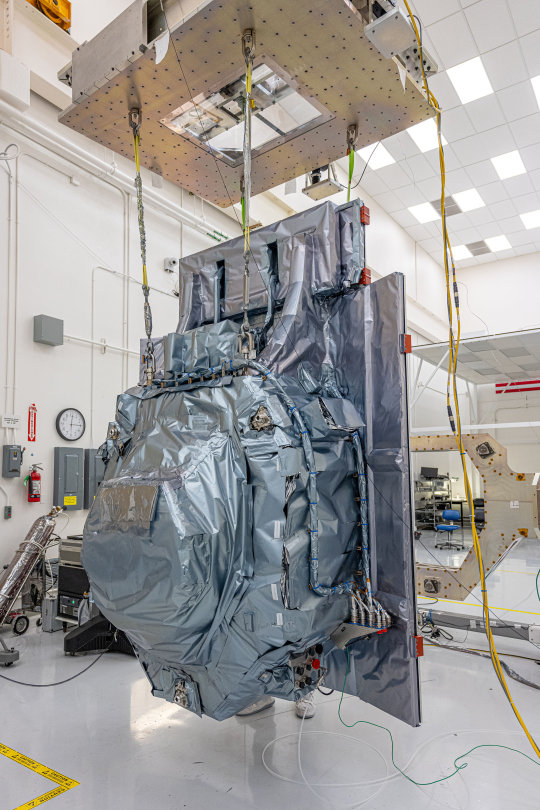
Primary instrument for NASA's Roman completed, begins tests
A team of engineers and technicians at Ball Aerospace, one of the industry partners for NASA's Nancy Grace Roman Space Telescope, and NASA's Goddard Space Flight Center in Greenbelt, Maryland, has finished assembling the spacecraft's giant camera. Called the Wide Field Instrument (WFI), this state-of-the-art tool will enable astronomers to explore the cosmos from the outskirts of our solar system to the edge of the observable universe.
"The year-long integration effort culminates in the instrument's first baseline performance testing, where we turn on the instrument to ensure it's working as expected," said Mary Walker, Roman's WFI instrument manager at Goddard. "Now the team is ready to take the instrument through key environmental testing to show it can withstand the harsh conditions of launch and in space."
The Ball team provided four components for the WFI: the stable optical structure, element wheel assembly, thermal management system, and alignment compensation mechanism. The Goddard team provided the critical optical elements, focal plane system, relative calibration system, and the instrument command and data handling electronics.
Then engineers from both teams put all these building blocks together in a clean room in Boulder, Colorado, mechanically and electrically integrating the components into one system. Now, the team will complete full environmental testing in space-like conditions before delivering the WFI to Goddard in summer 2024. Once there, it will join other observatory systems for integration and testing, as the mission gets ready to launch no later than May 2027.
The WFI is a 288-megapixel infrared camera that will give Roman the same angular resolution as the Hubble Space Telescope but with at least 100 times Hubble's field of view. Its sweeping cosmic surveys will help scientists discover new and uniquely detailed information about planets beyond our solar system, untangle mysteries like dark energy, and map how matter is structured and distributed throughout the cosmos. The mission's broad, crisp view will produce an extraordinary resource for a wide range of additional investigations.
"Overall, Roman's camera greatly exceeds the mission's performance requirements, including the operational capabilities of the camera detectors," said Julie McEnery, Roman's project scientist at Goddard. "So now we get to explore how much better Roman's surveys will be, and what we'll be able to do with the extra scientific riches they produce."
TOP IMAGE....After completing final integration, Ball Aerospace technicians transport the Nancy Grace Roman Space Telescope's Wide Field Instrument (WFI) into Ball's largest thermal vacuum chamber to begin environmental testing at a Ball facility in Boulder, Colorado. Credit: Ball Aerospace
CENTRE IMAGE....After completing final integration, Ball Aerospace technicians transport the Nancy Grace Roman Space Telescope's Wide Field Instrument (WFI) into Ball's largest thermal vacuum chamber to begin environmental testing at a Ball facility in Boulder, Colorado. Credit: Ball Aerospace
LOWER IMAGE....A close-up view of Roman's Wide Field Instrument, currently wrapped in a multi-layer insulation for testing. Credit: Ball Aerospace
18 notes
·
View notes
Text

O U R P L E
#nancy grace roman space telescope#nancy grace roman#ngrst#gijinka#gijinka art#space gijinka#digital art#space art#artists on tumblr#my art#special effects#chromatic aberration#purple
19 notes
·
View notes
Text

ourple
#fishcatart#art#doodle#nancy grace roman space telescope#ngrst#spacecraft#just a lil nance for destressing :'3
18 notes
·
View notes
Link
This photo shows the entire optics system for NASA’s Nancy Grace Roman Space Telescope. It consists ...
#originaltags#goddard space flight center#goddard technology#missions#nancy grace roman space telescope#science-enabling technology#technology#the universe
0 notes
Text
#science#spirituality#technology#tumblr milestone#nature#positivity#quotes#hubble telescope#outer space#space photography#mars#nasa breaking news#nasawebb#nasa#isro#isromissions#hubble#james webb telescope#nasa webb telescope#nancy grace roman space telescope#viral#viral on internet#tranding#viral online#viral on social media#youtumblr#youtube#instragram#facebook#facebookreels
1 note
·
View note
Text
Detector array delivered for Roman Space Telescope
A plate cover is installed over the detector array for NASA’s Nancy Grace Roman Space Telescope by Principal Technician Billy Keim. Credit: NASA / Chris Gunn
NASA’s Nancy Grace Roman Space Telescope’s primary instrument is set to receive its Focal Plane System, what NASA calls the “heart” of the observatory.
Continue reading Untitled

View On WordPress
#Ball Aerospace#Falcon Heavy#Goddard Space Flight Center#Nancy Grace Roman Space Telescope#NASA#SpaceX#The Range
0 notes
Text
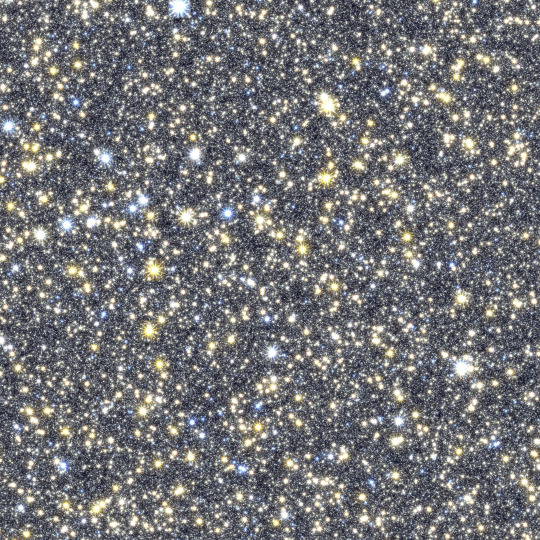
A simulated image of NASA’s Nancy Grace Roman Space Telescope’s future observations toward the center of our galaxy, spanning less than 1 percent of the total area of Roman’s Galactic Bulge Time-Domain Survey. The simulated stars were drawn from the Besançon Galactic Model.
Exploring the Changing Universe with the Roman Space Telescope
The view from your backyard might paint the universe as an unchanging realm, where only twinkling stars and nearby objects, like satellites and meteors, stray from the apparent constancy. But stargazing through NASA’s upcoming Nancy Grace Roman Space Telescope will offer a front row seat to a dazzling display of cosmic fireworks sparkling across the sky.
Roman will view extremely faint infrared light, which has longer wavelengths than our eyes can see. Two of the mission’s core observing programs will monitor specific patches of the sky. Stitching the results together like stop-motion animation will create movies that reveal changing objects and fleeting events that would otherwise be hidden from our view.
youtube
Watch this video to learn about time-domain astronomy and how time will be a key element in NASA’s Nancy Grace Roman Space Telescope’s galactic bulge survey. Credit: NASA’s Goddard Space Flight Center
This type of science, called time-domain astronomy, is difficult for telescopes that have smaller views of space. Roman’s large field of view will help us see huge swaths of the universe. Instead of always looking at specific things and events astronomers have already identified, Roman will be able to repeatedly observe large areas of the sky to catch phenomena scientists can't predict. Then astronomers can find things no one knew were there!
One of Roman’s main surveys, the Galactic Bulge Time-Domain Survey, will monitor hundreds of millions of stars toward the center of our Milky Way galaxy. Astronomers will see many of the stars appear to flash or flicker over time.
youtube
This animation illustrates the concept of gravitational microlensing. When one star in the sky appears to pass nearly in front of another, the light rays of the background source star are bent due to the warped space-time around the foreground star. The closer star is then a virtual magnifying glass, amplifying the brightness of the background source star, so we refer to the foreground star as the lens star. If the lens star harbors a planetary system, then those planets can also act as lenses, each one producing a short change in the brightness of the source. Thus, we discover the presence of each exoplanet, and measure its mass and how far it is from its star. Credit: NASA's Goddard Space Flight Center Conceptual Image Lab
That can happen when something like a star or planet moves in front of a background star from our point of view. Because anything with mass warps the fabric of space-time, light from the distant star bends around the nearer object as it passes by. That makes the nearer object act as a natural magnifying glass, creating a temporary spike in the brightness of the background star’s light. That signal lets astronomers know there’s an intervening object, even if they can’t see it directly.
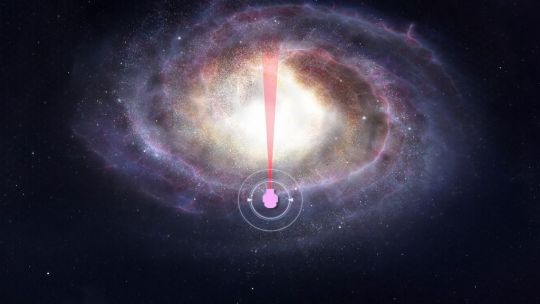
This artist’s concept shows the region of the Milky Way NASA’s Nancy Grace Roman Space Telescope’s Galactic Bulge Time-Domain Survey will cover – relatively uncharted territory when it comes to planet-finding. That’s important because the way planets form and evolve may be different depending on where in the galaxy they’re located. Our solar system is situated near the outskirts of the Milky Way, about halfway out on one of the galaxy’s spiral arms. A recent Kepler Space Telescope study showed that stars on the fringes of the Milky Way possess fewer of the most common planet types that have been detected so far. Roman will search in the opposite direction, toward the center of the galaxy, and could find differences in that galactic neighborhood, too.
Using this method, called microlensing, Roman will likely set a new record for the farthest-known exoplanet. That would offer a glimpse of a different galactic neighborhood that could be home to worlds quite unlike the more than 5,500 that are currently known. Roman’s microlensing observations will also find starless planets, black holes, neutron stars, and more!
youtube
This animation shows a planet crossing in front of, or transiting, its host star and the corresponding light curve astronomers would see. Using this technique, scientists anticipate NASA’s Nancy Grace Roman Space Telescope could find 100,000 new worlds. Credit: NASA’s Goddard Space Flight Center/Chris Smith (USRA/GESTAR)
Stars Roman sees may also appear to flicker when a planet crosses in front of, or transits, its host star as it orbits. Roman could find 100,000 planets this way! Small icy objects that haunt the outskirts of our own solar system, known as Kuiper belt objects, may occasionally pass in front of faraway stars Roman sees, too. Astronomers will be able to see how much water the Kuiper belt objects have because the ice absorbs specific wavelengths of infrared light, providing a “fingerprint” of its presence. This will give us a window into our solar system’s early days.
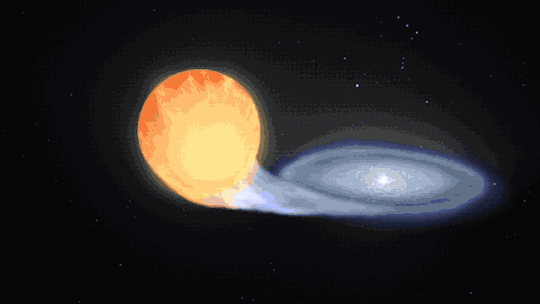
This animation visualizes a type Ia supernova.
Roman’s High Latitude Time-Domain Survey will look beyond our galaxy to hunt for type Ia supernovas. These exploding stars originate from some binary star systems that contain at least one white dwarf – the small, hot core remnant of a Sun-like star. In some cases, the dwarf may siphon material from its companion. This triggers a runaway reaction that ultimately detonates the thief once it reaches a specific point where it has gained so much mass that it becomes unstable.
youtube
NASA’s upcoming Nancy Grace Roman Space Telescope will see thousands of exploding stars called supernovae across vast stretches of time and space. Using these observations, astronomers aim to shine a light on several cosmic mysteries, providing a window onto the universe’s distant past. Credit: NASA’s Goddard Space Flight Center
Since these rare explosions each peak at a similar, known intrinsic brightness, astronomers can use them to determine how far away they are by simply measuring how bright they appear. Astronomers will use Roman to study the light of these supernovas to find out how quickly they appear to be moving away from us.
By comparing how fast they’re receding at different distances, scientists can trace cosmic expansion over time. This will help us understand whether and how dark energy – the unexplained pressure thought to speed up the universe’s expansion – has changed throughout the history of the universe.
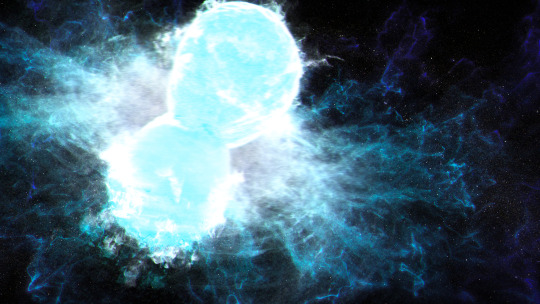
NASA’s Nancy Grace Roman Space Telescope will survey the same areas of the sky every few days. Researchers will mine this data to identify kilonovas – explosions that happen when two neutron stars or a neutron star and a black hole collide and merge. When these collisions happen, a fraction of the resulting debris is ejected as jets, which move near the speed of light. The remaining debris produces hot, glowing, neutron-rich clouds that forge heavy elements, like gold and platinum. Roman’s extensive data will help astronomers better identify how often these events occur, how much energy they give off, and how near or far they are.
And since this survey will repeatedly observe the same large vista of space, scientists will also see sporadic events like neutron stars colliding and stars being swept into black holes. Roman could even find new types of objects and events that astronomers have never seen before!
Learn more about the exciting science Roman will investigate on X and Facebook.
Make sure to follow us on Tumblr for your regular dose of space!
#NASA#astronomy#telescope#Roman Space Telescope#dark energy#galaxies#cosmology#astrophysics#stars#galaxy#space images#time#supernova#Nancy Grace Roman#black holes#neutron stars#kilonova#rogue planets#exoplanets#space#science#tech#technology#Youtube
2K notes
·
View notes
Link
Prepare for an enthralling cosmic odyssey on today's episode of Astronomy Daily - The Podcast, where the fabric of the universe unfolds in spectacular revelations. Host Anna navigates us through the cosmic wilderness, from the detection of the universe's earliest stars to the theoretical marvels of advanced civilizations. We delve into the profound implications of discovering primordial black holes and the mesmerizing visualizations of a supermassive black hole's event horizon. Join us as we ponder Elon Musk's skepticism on extraterrestrial life, despite humanity's relentless search for technosignatures like the Dyson spheres. With the Nancy Grace Roman Space Telescope on the horizon, we stand at the precipice of potentially affirming the existence of ancient cosmic relics, challenging our understanding of dark matter and cosmic evolution.1. **Primordial Starlight**: Unveiling the universe's first stars through tidal disruption events.2. **Musk's Cosmic Skepticism**: Debating the existence of extraterrestrial life amidst Starlink's silent skies.3. **Journey to the Abyss**: NASA's visualization of a black hole's gravitational dance.https://science.nasa.gov/supermassive-black-holes/new-nasa-black-hole-visualization-takes-viewers-beyond-the-brink/ 4. **The Hunt for Dyson Spheres**: Project Hefaistos's search for the fingerprints of advanced civilizations.5. **Whispers of Creation**: The Nancy Grace Roman Space Telescope's quest for primordial black holes.
For an immersive experience of the cosmos, visit our website at astronomydaily.io, and join the stargazing community on X (@AstroDailyPod) for continuous updates and celestial conversations. Until our next stellar encounter, this is Anna reminding you to keep your eyes on the skies and your curiosity ever burning. Clear skies and boundless wonder to all our fellow space enthusiasts!
This episode is presented with the support of our cosmic companions at NordPass. Secure your interstellar journey with our special offer by visiting www.bitesz.com/nordpass.
Support Astronomy Daily the Podcast and access the commercial-free episodes by checking out our supporter link. Become a supporter of this podcast: https://www.spreaker.com/podcast/astronomy-daily-the-podcast--5648921/support.
#accretion#and#black#disk#elon#event#extraterrestrial#grace#hole#horizon#life#musk#nancy#roman#satellites#space#starlink#telescope#ufos#visualization
0 notes
Text
NASA Extends Nancy Grace Roman Space Telescope Science Operations
NASA has awarded a contract extension to the Association of Universities for Research in Astronomy Space Telescope Science Institute in Baltimore for the support services required for the agency’s Nancy Grace Roman Space Telescope Science Operations.
from NASA https://ift.tt/Hbl5Mfz
0 notes
Text
Guessing your age might be a popular carnival game, but for astronomers it's a real challenge to determine the ages of stars. Once a star like our sun has settled into steady nuclear fusion, or the mature phase of its life, it changes little for billions of years. One exception to that rule is the star's rotation period—how quickly it spins. By measuring the rotation periods of hundreds of thousands of stars, NASA's Nancy Grace Roman Space Telescope promises to bring new understandings of stellar populations in our Milky Way galaxy after it launches by May 2027.
Stars are born spinning rapidly. However, stars of our sun's mass or smaller will gradually slow down over billions of years. That slowdown is caused by interactions between a stream of charged particles known as the stellar wind and the star's own magnetic field. The interactions remove angular momentum, causing the star to spin more slowly, much like an ice skater will slow down when they extend their arms.
Continue Reading.
#Science#Space#Astronomy#Physics#Stars#Ai#Artifical Intelligence#NASA#National Aeronautics and Space Administration
47 notes
·
View notes
Text
NASA's Roman Telescope to Explore the Heart of the Milky Way
Watch this amazing video to learn about time-domain astronomy, how time will be a key element in the Nancy Grace Roman Space Telescope's galactic bulge survey and how the James Webb Telescope will work together with Nancy Grace Roman Space Telescope to unfold the universe!
Music: "Elapsing Time" and "Beyond Truth" from Universal Production Music
Credit: NASA's Goddard Space Flight Center. #nancygraceromantelescope #nasa #space #jwst Follow this page for the latest findings in the universe.
15 notes
·
View notes
Text

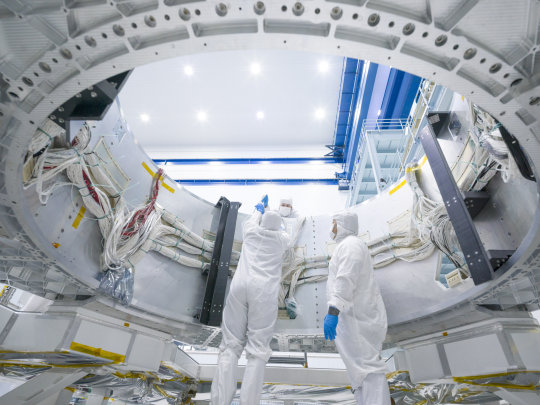
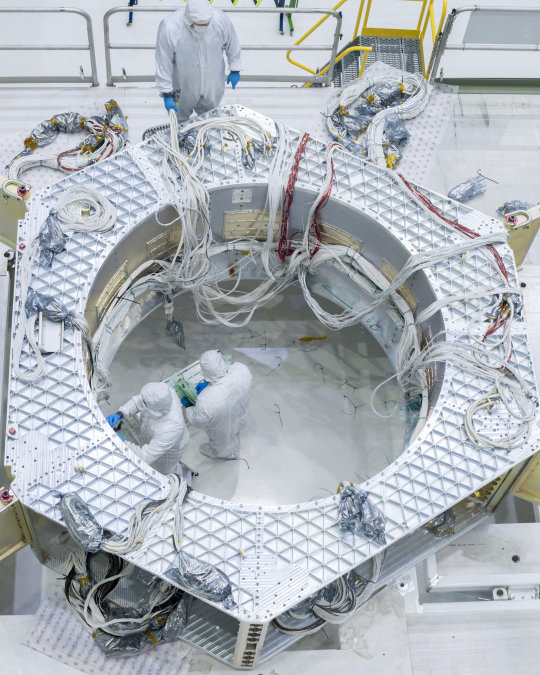
NASA begins integrating 'nervous system' for Roman Space Telescope
NASA's Nancy Grace Roman Space Telescope team has begun integrating and testing the spacecraft's electrical cabling, or harness, which enables different parts of the observatory to communicate with one another. Additionally, the harness provides power and helps the central computer monitor the observatory's function via an array of sensors. This brings the mission a step closer to surveying billions of cosmic objects and untangling mysteries like dark energy following its launch by May 2027.
"Just as the nervous system carries signals throughout the human body, Roman's harness connects its components, providing both power and commands to each electronic box and instrument," said Deneen Ferro, the Roman harness project development lead at NASA's Goddard Space Flight Center in Greenbelt, Maryland. "Without a harness, there is no spacecraft."
Weighing around 1,000 pounds, the harness is made up of approximately 32,000 wires and 900 connectors. If the wires were laid out end-to-end, they would span 45 miles. Directed upward, they would reach eight times higher than the peak of Mount Everest.
Achieving this milestone was no small task. Over the course of about two years, a team of 11 Goddard technicians spent time at the workbench and perched on ladders, cutting wire to length, meticulously cleaning each component, and repeatedly connecting everything together.
The entire harness was built on an observatory mock-up structure before being transported to Goddard's Space Environment Simulator—a massive thermal vacuum chamber used in this case for "bakeout." When observatories like Roman are sent to space, the resulting vacuum and orbital temperatures can cause certain materials to release harmful vapors, which can then condense within electronics and create problems like short circuits or deposits on sensitive optics, degrading the telescope's performance.
Bakeout releases these gases on Earth so they aren't emitted inside the spacecraft when in space.
Now, engineers will weave the harness through the flight structure in Goddard's big clean room. This ongoing process will continue until most of the spacecraft components are assembled. In the meantime, the Goddard team will soon begin installing electronics boxes that will eventually provide power via the harness to all the spacecraft's science instruments.
TOP IMAGE....The Nancy Grace Roman Space Telescope's flight harness is transferred from the mock-up structure to the spacecraft flight structure.Suggested alt text: A group of people wearing white clean room suits with hoods and blue gloves work in a circle at the base of a tall, silver-and-gold structure laced with wiring. Behind them, on the right, is an eight-story white wall with blue stripes and a glass window. The left, far wall is covered in pale, square filters. Credit: NASA/Chris Gunn
CENTRE IMAGE....Technicians work to secure Roman's harness to the interior of the spacecraft flight structure. They are standing in the portion of the spacecraft bus where the propellant tanks will be mounted.Suggested alt text: Seen from below, two individuals wearing white clean room suits with hoods and blue gloves work inside of a silvery cylindrical metal structure. Seven bright lights mounted to the ceiling shine down onto them. Credit: NASA/Chris Gunn
LOWER IMAGE....Technicians work to secure Roman's harness to the interior of the spacecraft flight structure. They are standing in the portion of the spacecraft bus where the propellant tanks will be mounted.Suggested alt text: Seen from below, two individuals wearing white clean room suits with hoods and blue gloves work inside of a silvery cylindrical metal structure. Seven bright lights mounted to the ceiling shine down onto them. Credit: NASA/Chris Gunn
3 notes
·
View notes
Text
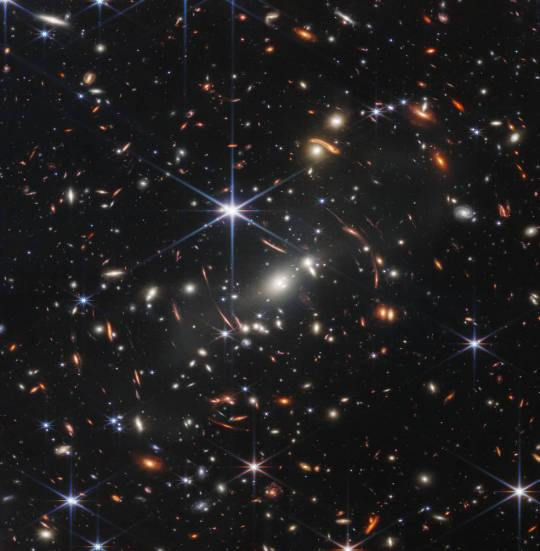
^This image – the first released from NASA’s James Webb Space Telescope – shows the galaxy cluster SMACS 0723. Some of the galaxies appear smeared or stretched due to a phenomenon called gravitational lensing. This effect can help scientists map the presence of dark matter in the universe.
Could one of the biggest puzzles in astrophysics be solved by reworking Albert Einstein’s theory of gravity? A new study co-authored by NASA scientists says not yet.
The universe is expanding at an accelerating rate, and scientists don’t know why. This phenomenon seems to contradict everything researchers understand about gravity’s effect on the cosmos: It’s as if you threw an apple in the air and it continued upward, faster and faster. The cause of the acceleration, dubbed dark energy, remains a mystery.
A new study from the international Dark Energy Survey, using the Victor M. Blanco 4-meter Telescope in Chile, marks the latest effort to determine whether this is all simply a misunderstanding: that expectations for how gravity works at the scale of the entire universe are flawed or incomplete. This potential misunderstanding might help scientists explain dark energy. But the study – one of the most precise tests yet of Albert Einstein’s theory of gravity at cosmic scales – finds that the current understanding still appears to be correct.
The results, authored by a group of scientists that includes some from NASA’s Jet Propulsion Laboratory, were presented Wednesday, Aug. 23, at the International Conference on Particle Physics and Cosmology (COSMO'22) in Rio de Janeiro. The work helps set the stage for two upcoming space telescopes that will probe our understanding of gravity with even higher precision than the new study and perhaps finally solve the mystery.
More than a century ago, Albert Einstein developed his Theory of General Relativity to describe gravity, and so far it has accurately predicted everything from the orbit of Mercury to the existence of black holes. But if this theory can’t explain dark energy, some scientists have argued, then maybe they need to modify some of its equations or add new components.
To find out if that’s the case, members of the Dark Energy Survey looked for evidence that gravity’s strength has varied throughout the universe’s history or over cosmic distances. A positive finding would indicate that Einstein’s theory is incomplete, which might help explain the universe’s accelerating expansion. They also examined data from other telescopes in addition to Blanco, including the ESA (European Space Agency) Planck satellite, and reached the same conclusion.
The study finds Einstein’s theory still works. So no explanation for dark energy yet. But this research will feed into two upcoming missions: ESA’s Euclid mission, slated for launch no earlier than 2023, which has contributions from NASA; and NASA’s Nancy Grace Roman Space Telescope, targeted for launch no later than May 2027. Both telescopes will search for changes in the strength of gravity over time or distance.
Read more/video: https://www.nasa.gov/feature/jpl/nasa-scientists-help-probe-dark-energy-by-testing-gravity
30 notes
·
View notes
Note
h, e, or n?
HERE SHE FUCKING COMES!!!!!
ok i wasnt sure i wanted to do this but um. teehee



(SECOND pic (OOPS) by @enderesting )
hi... this is nancy grace roman space telescope (ngrst)!!!!!!! ill be ashamed of EVERY other space object gjinka i have. EXCEPT her. because she is my special lass.
what do i even say about her? that ive written a books worth of nonsense about her..... that she is my specialist character....like first of all ok nancy contains multitudes.
second of all YES shes a 17776 oc 😏 because what else cld she possibly be.
anyway
she likes to play video games, watch da stars, and talk to other people :3. i got too excited so i cant actually talk about whats gone on in her life because its so much. long story short human guy packbonds w her and it all goes up/downhill from there
26 notes
·
View notes
Link
This photo shows the entire optics system for NASA’s Nancy Grace Roman Space Telescope. It consists ...
#originaltags#goddard space flight center#goddard technology#missions#nancy grace roman space telescope#science-enabling technology#technology#the universe
0 notes
Text
On May 16th, 2023, NASA announced the completion of an important component of its next large space telescope project, the Nancy Grace Roman Telescope. Referred to as the “heart” of the Roman Telescope, this piece is the first essential component to be assembled before testing begins later this summer.
#astronomy#astrophysics#physics#women in stem#my writing#science#science news#astrology#galaxy#research#nasa#space
2 notes
·
View notes